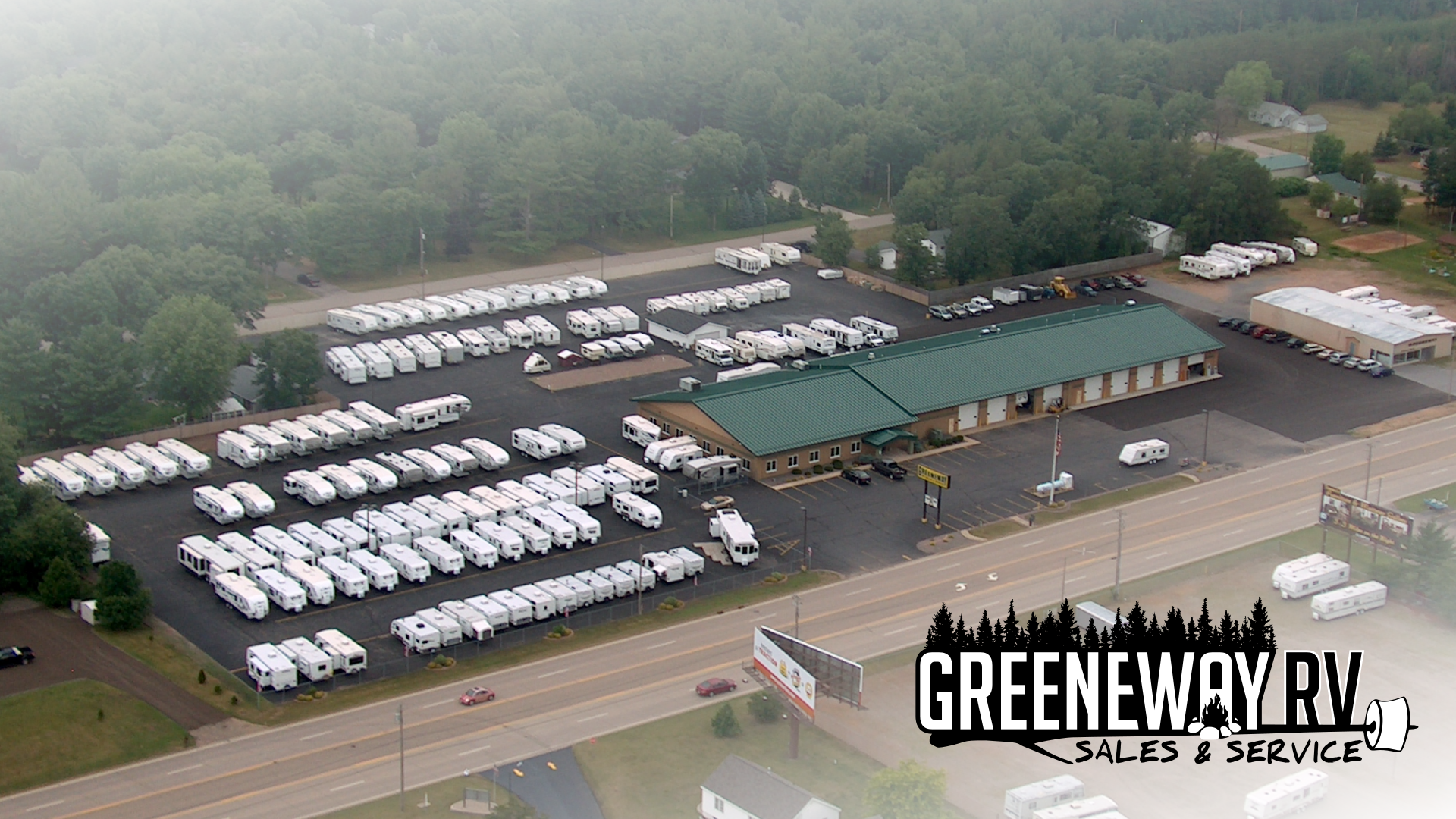Don’t miss out!
Get the latest resources sent directly to your inbox.
Matt Ferkey, Service Manager at Greeneway RV Sales & Services in Wisconsin Rapids, WI, knows the RV industry through-and-through. He grew up around the family-owned dealership. His father, Mark Ferkey, has been in the RV industry since 1977. Mark worked at Greeneway RV Sales & Services for a time, before eventually buying the dealership and taking over ownership in 1987.
Greeneway RV has grown a lot from when it was founded. The dealership started as a single bay and an old pole building. Then, in 1995, the Ferkey family expanded the dealership to a new facility with eight service bays (a number that was, up until then, unheard of in a small town of 18,000 people). Later, in the early 2000s, the family added an additional ten service bays, bringing their grand total up to eighteen—not too shabby for a small family-run business. Not only that, but they also have the most RVDA-certified technicians in a single location in Wisconsin.
With those accomplishments under their belt, it’s no wonder they’ve received an RV Business Dealer Award blue ribbon for ranking in the top five of the top 50 dealerships, five years in a row.
Now, management of the dealership is transitioning into Matt’s hands. With his eyes set on the future, Matt is implementing some changes to how things are run, to ensure that their business continues to thrive in a changing market.
We chatted with Matt to get his insights on how optimizing your service processes can enhance your customer relationships and bottom line.
Matt: “I was around Greeneway growing up but started my career here in Sales. I did that for a few years before moving to Service department, worked in Parts, and service advising. Now, I’m in Marketing and overseeing a lot of different operations.
I see the entire industry transitioning away from the sales side of things being a profit center, much like a car dealership – the profitability and new unit sales is going down as internet marketing is taking off.
For the last few years—and we’re certainly going to continue—we’ve been streamlining processes, procedures, increasing efficiency, implementing different incentives, and payment plans for Parts and Services staff.
Something you can’t get on the internet is service. You can have a great buying experience but after the fact, when something breaks and you need warranty work or anything like that, you cannot get that service through a screen. That’s where we’re trying to be a bit ahead of the curve and be a very profitable Parts and Service-forward dealership.”

Matt: “A long time ago, before we even had a dealer management system, we were using a pad of paper. That evolved into an Excel spreadsheet and then we started using Systems2000 and used their built-in scheduler, which is more or less just a calendar. The only way to schedule appointments was to reserve a time slot. When a customer would call in to have some work done, we would look for an empty slot to drop them in on.
The issue that we constantly ran into and accepted as being a necessary evil was the amount of disappointment and rework for the customers. When they dropped off the trailer, they expected that we were going to bring in their trailer and complete everything on the day they had scheduled. But in reality, there are a lot of moving parts—there’s diagnosis, there’s warranty authorization, there are parts that need to be ordered and other things that come up like emergency drive-ins. It makes the schedule so airtight that in normal day-to-day, real-life, nothing goes according to plan. Every day is its own little bit of chaos.
Now, with IDS, we’re scheduling for promise dates which allow us to have the vehicle dropped off with ample time for us to bring it in, diagnose it, get any authorizations necessary, order parts, bring it back in, and get it repaired before the customer is expecting to have it back. That also gives us the ability to do more proactive service recommendations if we notice that their tires are checked, or they need to have the roof sealed. While we’re still working on the trailer, we can call them, suggest upgrades, and still complete the work within that promised timeframe.
We are definitely selling labor time that we never would have been if we didn’t adopt IDS.”
Matt: “It was monumental. It was a huge undertaking to switch. When you’ve been with a computer system for ten years, there’s so much stuff that isn’t going to transfer. Manually rebuilding some of those items in IDS and creating new processes to accomplish an end task involves a lot of moving pieces. IDS prepared us for that.
The implementation staff that came to our facility were absolutely amazing. They have the years in, they know how the system works. The biggest thing that you don’t see with a regular DMS support provider, that you do see with IDS, is that the implementation team can understand and take the time to find a solution for your end goal. They’re able to find a way to make your desired outcome work within the system.”
Matt: “It’s been good overall. People are much more appreciative, and it feels like all of the communication flows much better. There’s natural communication throughout the repair process, versus trailers sitting here until the day it’s supposed to be worked on, customers expecting it to be done, and then calling the customer saying, “Hey, we found this, we need your trailer for another week.”
Get the latest resources sent directly to your inbox.